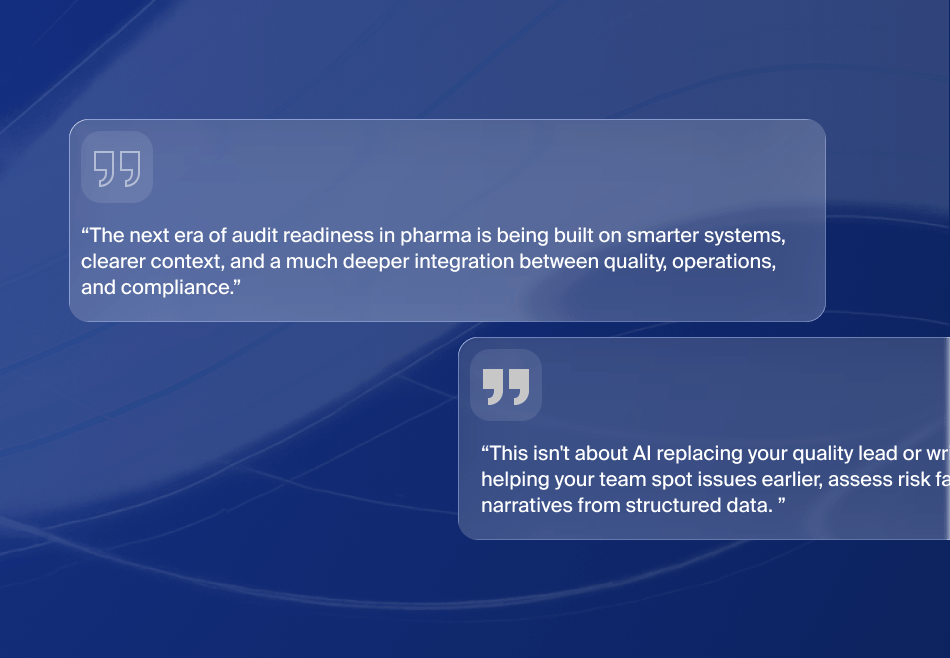Introduction
A worker dies of toxic exposure every 30 seconds worldwide, whereas a worker dies of workplace hazards every 15 seconds.
These numbers are alarming indeed. While chemical safety management has always been one of the top concerns of organizations to ensure employee safety and meet regulatory compliance, accidents with chemicals can occur at any time during production, storage, transportation, when in-use, or even disposal. Your organization and surrounding communities can be placed at great risk if chemicals are used unsafely or accidentally released in the environment.
Since the rapid outbreak of Covid 19, limitations and lack of visibility in the workplace have made managing chemical hazards significantly more difficult. While much of the world is still figuring out ways of dealing with the after-effects of the COVID-19 pandemic, organizations have already started to emphasize improvements in employee health, safety and well being. Their keen focus now is on integrating safety across all chemical processes. Companies are taking help from Environmental, Health & Safety(EHS) professionals to inspect and approve their facility standards and build awareness and caution among the workforce. In this capacity there will be a need for continuous communication, especially for add-on visibility of when the process is followed and not.
The recent Control & Prevention plan of the US Occupational Safety and Health Authority (OSHA) states:
Employers should adopt infection control strategies based on a thorough hazard assessment, using appropriate combinations of engineering and administrative controls, safe work practices, and personal protective equipment (PPE) to prevent worker exposures. Some OSHA standards that apply to preventing occupational exposure to SARS-CoV-2 also require employers to train workers on infection prevention elements, including the use of PPE.
To What Extent Are Chemicals Used in Workplace & Environment?
96%
or more of all manufacturing companies utilize chemical substances to develop their products.
Source: American Chemistry Council (ACC)
Whether it’s the construction industry, mobile device manufacturing, or even pharmaceuticals, there are very few industries and trades in the world that are absolved from chemical exposure. There have even been reports of chemical-related accidents in organizations where it was least expected.
In the US, 90% of all industrial materials and wastes generated from the following four industries:
- Chemical Manufacturing
- Primary Metal Production
- Metal Fabrication
- Petroleum Processing
Hazardous chemicals are found in most consumer products around us, ranging from household electronic appliances such as televisions, refrigerators, and personal computers to home goods such as furniture, carpets, cleaning supplies, and more. On the one hand, we use chemicals to purify our drinking water, increase crop production and simplify everyday household chores. In contrast to this, some chemicals pose severe hazards to human life and the environment if used or mishandled.
For example, the chemical Bisphenol A (BPA) is found in plastics that we use every day in our regular life and exposure, which is known to cause hormonal problems.
Figure: 1Your everyday things with hazardous chemicals
Exposure and Handling of Hazardous Chemicals in the Workplace: Measuring the Impact
Prolonged exposure to chemicals and hazardous physical agents has been to cause multiple adverse health conditions. Cancer is one of the most commonly experienced results. Due to the inhalation of carcinogenic substances, lung cancer accounts for 86% of all premature deaths in the workplace. The yearly death toll of workers has crossed 2.8 million globally due to an unhealthy and unsafe work environment, according to the 2019 UN Report. A worker died of leukemia due to exposure to toxic substances daily. Another worker died of CO2 poisoning.
In 2019, OSHA cited a few events of chemical exposure as damaging to environmental health & safety
- A pet food manufacturer in Florida exposed employees to corrosive chemicals for failing to provide PPE.
- A Pennsylvania-based hair salon exposed its workers to formaldehyde due to inadequate precautionary measures. The resulting fine was upwards of $17,000 for not abiding by OSHA’s formaldehyde and hazard communication standards.
- An Ohio-based musical instrument factory exposed its workers to toxic copper dust after attempting to use it on a greater scale than the recommended permissible level. Consequently, the company had to pay a hefty sum of $200,230 for severe safety and health violations.
- A Texas indoor gun range exposed its workers to unsafe levels of lead at its facility. The employer was fined $214,387 for exceeding the permissible exposure limit, failure to decontaminate the surface and not replacing damaged PPE.
Chemical Safety Management in the Workplace Is a Responsibility, not a Choice
Dangers mentioned above and the growing list of regulations from agencies like OSHA and Reach are leading more and more companies to take preventive measures to identify and eliminate hazardous chemicals in the workplace, which pose a threat to your organization, employees, customers, and all other stakeholders involved.
Managing chemical footprint is not just an OSHA compliance but more a civic duty.
Why It’s Essential for Companies to Abide by Regulatory Compliance
Regulatory Compliance has become something that can’t be forgotten, with non-compliance attracting unwanted attention from regulatory agencies – often followed by large penalties as well as a threat to your business’s licenses.
Figure: 2 Regulatory compliance agencies
We covered the penalties involved in a previous article, ‘How Managing Hazardous Chemical Information solves EHS Challenges’ ‘We have noticed that in 2017, the Occupational Safety and Health Administration (OSHA) increased the severity of penalties by 80% and imposed hefty fines ranging from $7,000 up to $12,000 for noncompliance to GHS through 2016-17. For serious violations, the penalties could be as high as $70,000 to $127,000.’
Figure: 3 OSHA penalties for non-compliance
According to OSHA’s recent revision of chemical safety standards, each container of hazardous chemicals needs to be labeled with a set of standardized pictograms in alignment with the United Nations’ Globally Harmonized System of Classification and Labelling of Chemicals (GHS). The intention is to help workers identify the containers with hazardous chemicals rightly despite language barriers to avoid accidents.
Labels must also provide instructions on how to handle the chemical so that chemical users are informed about how to protect themselves. Specifically, labels must contain the following information: product identifier; signal word; hazard statement(s); precautionary statement(s); pictogram(s); and the name, address, and telephone number of the chemical manufacturer importer or other responsible parties.
Safety data sheets (SDS— formerly referred to as “material safety data sheets,” or MSDS) will require a new standardized look that will help workers anywhere quickly find and understand the information they need. The revised standard requires using a 16-section SDS format, which provides detailed information regarding the chemical. As with MSDS, OSHA requires that SDS be kept in work areas where chemicals are used and stored. Labels offer essential information for anyone who handles, uses, stores, and transports hazardous chemicals, but, of course, they are limited by design in the amount of information they can provide. SDS is a complete resource for details regarding hazardous chemicals.
Some of the things that organizations can do to avoid such fines and unwanted attention from regulatory agencies are relatively straightforward:
- Chemical manufacturers need to ensure their products are correctly labeled according to GHS label requirements.
- They should also strive to remain compliant with all other regulatory policies, industry standards, and government policies to ensure safety management.
- Periodic testing should be performed to ensure that chemicals will not cause harm to public health, and if they do, they should be either re-formulated or correctly safety-labeled.
Figure: 4Reach compliance measures to control the environmental impact of chemical substances
Registration, Evaluation, Authorization, and Chemicals (REACH) restriction came into effect on June 01, 2007, to regulate chemicals used in consumer products. REACH has the potential to regularize chemicals.
Under this new law, all chemical companies have to submit a Chemical Safety Report to REACH that includes information on their chemical substances and their effects on the environment, public health, and safety. Chemical companies must register all the new and existing chemicals marketed for commercial use and those exported or imported.
Figure: 5The significance of REACH in terms of numbers is highlighted as below:
The above image depicts the enormous benefits gained in return to REACH’s cost as per the BBC.
Streamlining Processes with Technology
In the current day, having the right technology in place can simplify everything we do. Thankfully, most of the issues we mentioned can be taken care of with integrated applications designed from the ground up to help chemical companies easily meet their regulatory obligations for compliance and safety.
What are some key functions that help Chemical Companies with compliance?
Chemical companies’ ideal functioning method is when seamless integration of SDS Chemical Management, Label Management, and DEA controls align with your operational ERP system’s transactions. You simplify the software landscape without additional applications or tools to author Safety Data Sheets (SDS) and print labels anymore.
Regulatory Compliance
- The integrated software should help comply with regulatory standards and government policies such as OSHA, REACH, FDA, HIPAA, LCSA, DEA to reduce risks and improve safety.
Key Product Functions
- Extensive SDS Management functionality, Label Management (incl. Private Labels) & DEA Management in one unique integrated application will give the necessary leverage to chemical companies and help function more efficiently.
Label Printing
- An included Label Management function enables chemical companies to automatically print labels according to Globally Harmonized System (GHS) labeling standards. These labels can be embedded within the workflow of key operational transactions such as Production Orders, eliminating the need for manual intervention.
SDS Chemical Management
- A full-function SDS Chemical Management & Authoring system helps chemical companies handle the GHS, OSHA, REACH, and Chemical Environment Safety. Companies can now maintain Safety Data Sheets (SDS) within the ERP system without integrating a 3rd-party application.
- Companies would still be required to identify and validate chemical information with the appropriate agencies and ensure accurate information management within the system.
- An integrated software application provides the technology, workflows, infrastructure to maintain chemical data and print safety data sheets.
- The system should provide versioning, country and language packs and maintain different SDS templates in the system.
Validation
- An ideal system will also include DEA Management features designed to perform validations in real-time, ensuring that the contacts, customers, and buyers are DEA-certified.
Ongoing these systems and proper labeling ensure chemical safety for the consumers and the companies handling these chemicals. Utilizing the right technology helps reduce input needed when generating labels and streamline the processes and ensure your organization remains compliant year after year.
Key Takeaways
- Chemical companies must label chemicals in adherence with the regulatory standards related to storage, transportation, handling and disposal of hazardous materials and waste.
- Business in this industry should be taking advantage of modern, powerful ERP systems to help manage chemical inventories with increased safety and efficiency.
- Failure to follow these guidelines can lead to large fines and penalties, damage to an organization’s reputation, and in worst cases – injury and loss of life.
To learn more about ICM (Integrated Chemical Management), contact Xcelpros today.
Get a Consultation on Effective Management of Hazardous Chemicals.













